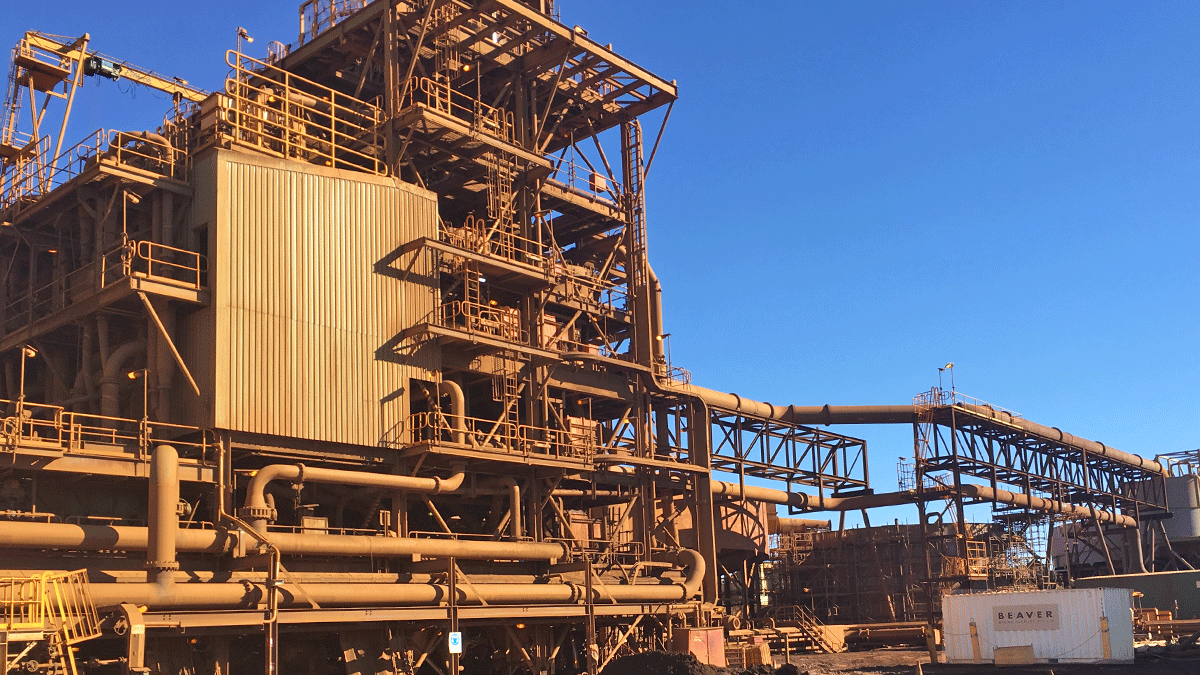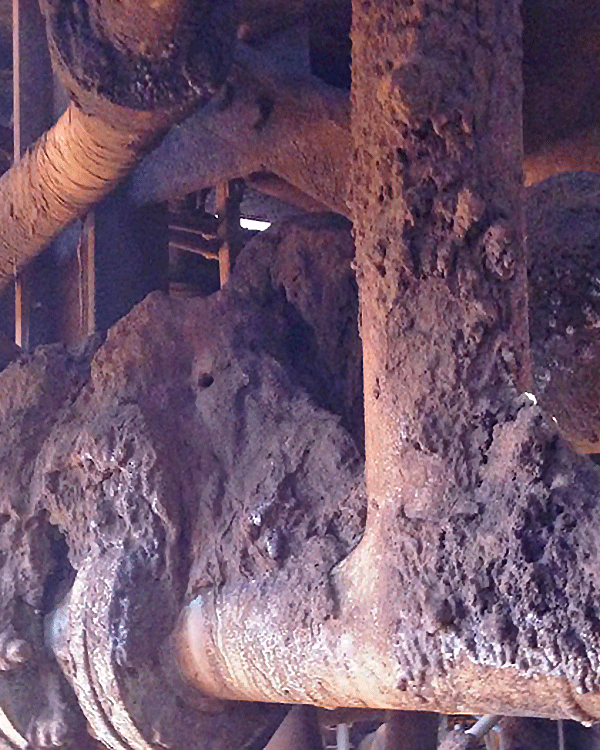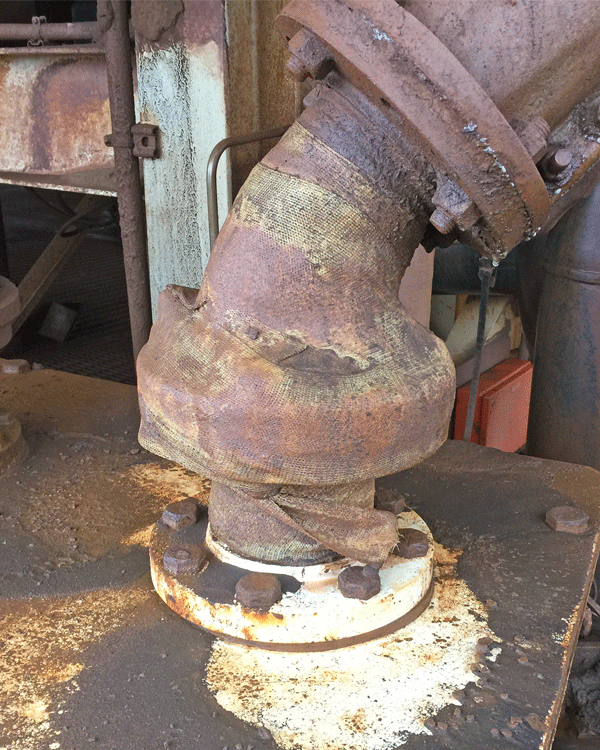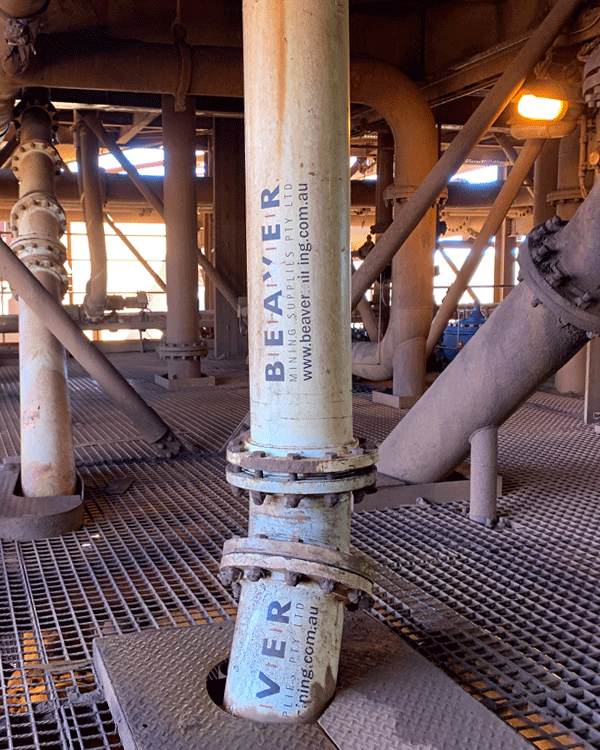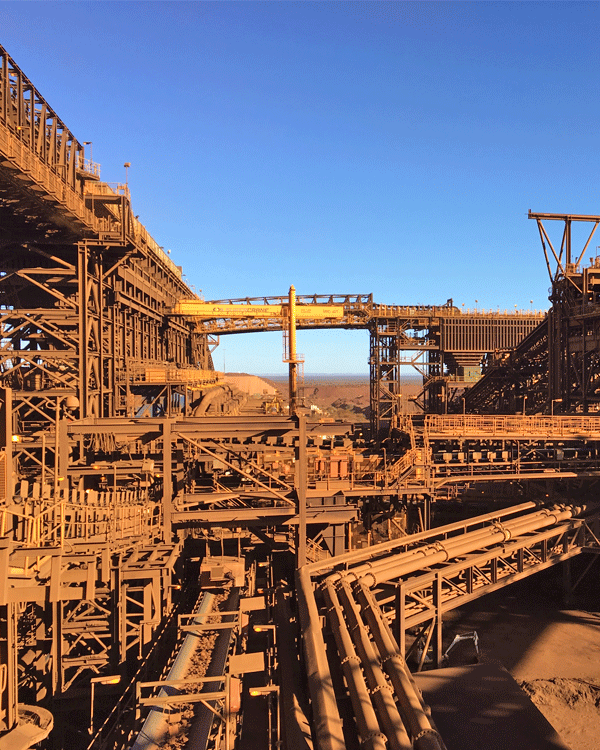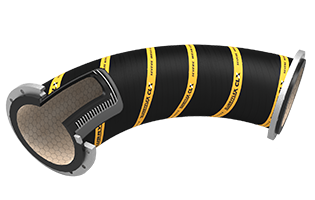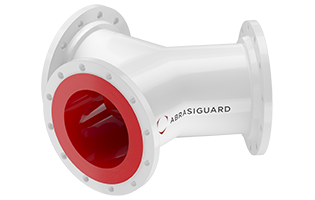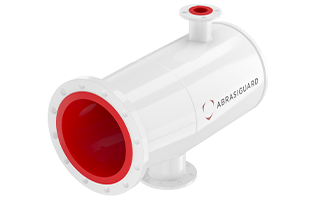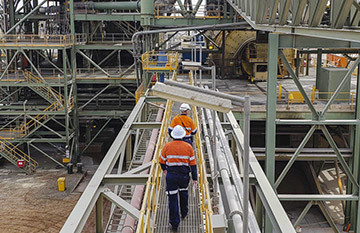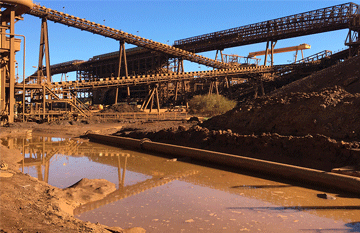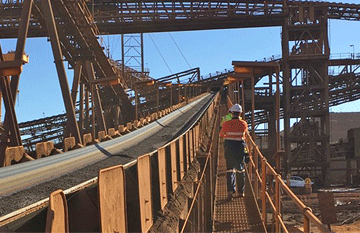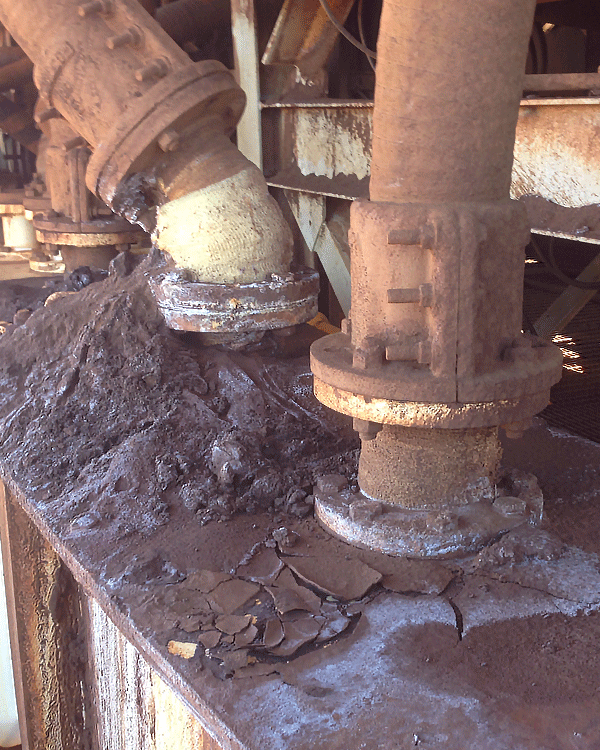
Pipework problems
The de-sands plant at FMG’s Cloudbreak mine was becoming high maintenance for the plant engineering team. Sections of pipework were only lasting a few weeks before blowing out.
The team were being sprayed with mud each time they walked through the plant. Not only was it a messy, frustrating job to bandage and replace the failing pipework, they also knew it presented safety concerns.
The team wanted to end the constant unplanned shutdowns so they could get on with other improvements.
Under the spiral launders, the plant had a mix of 6mm rubber-lined piping and HDPE. The HDPE pipework was wearing out within weeks, while the rubber-lined spools needed replacing every 3-6 months, and this was resulting in costly halts in production in between shutdowns.
The team were considering different pipe liner options to increase the lifespan of the pipework.
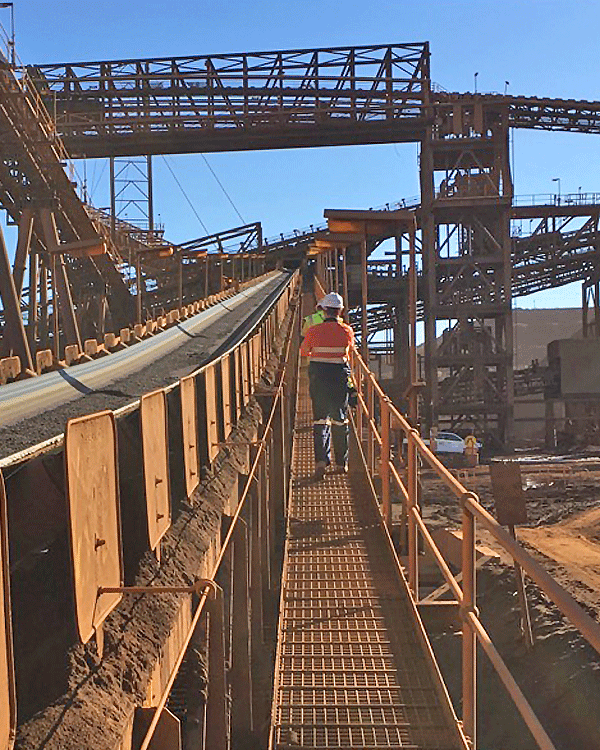
The site visit
We’ve worked with the team at Cloudbreak since the mine was commissioned in 2008. The reliability engineer invited us back to site to see if we could recommend a better solution.
We inspected the failing rubber-lined and HDPE pipework under the spiral launders.
This part of the plant has highly turbulent, larger particle size slurry, so it needs a lining with the highest level of abrasion resistance.
We also noticed that there was localised aggressive wear to the end connections due to a change in the internal diameter between the different lined pipes and hoses.
After speaking with the reliability engineer and his team, we completed some analysis and provided the team a plant audit with practical recommendations on how to fix the issue.
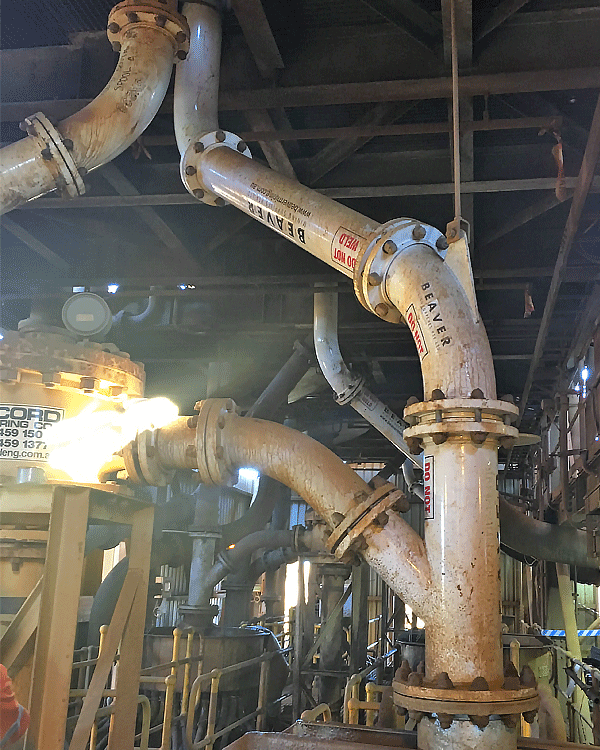
Our three recommendations
1. Increase lifespan of straight spools
We identified that severe abrasion was the primary cause of wear on the straight spools. Iron ore slurry is particularly abrasive, so the plant needed a solution with the highest level of wear resistance.
We recommended Abrasiguard slurry piping as it has a high-grade polymer lining, with excellent sliding abrasion resistance, and is ideal for aggressive slurry applications.
2. Reduce wear rate on bends
The particle size and velocity of the slurry under the spiral launders was causing accelerated wear on the HDPE pipe bends.
To solve this, we suggested switching to Slurryflex CLX pre-formed bends. CLX has ceramic tiles that are heat bonded into the rubber hose for increased wear resistance. It can also absorb and dissipate impact better than rigid steel spools.
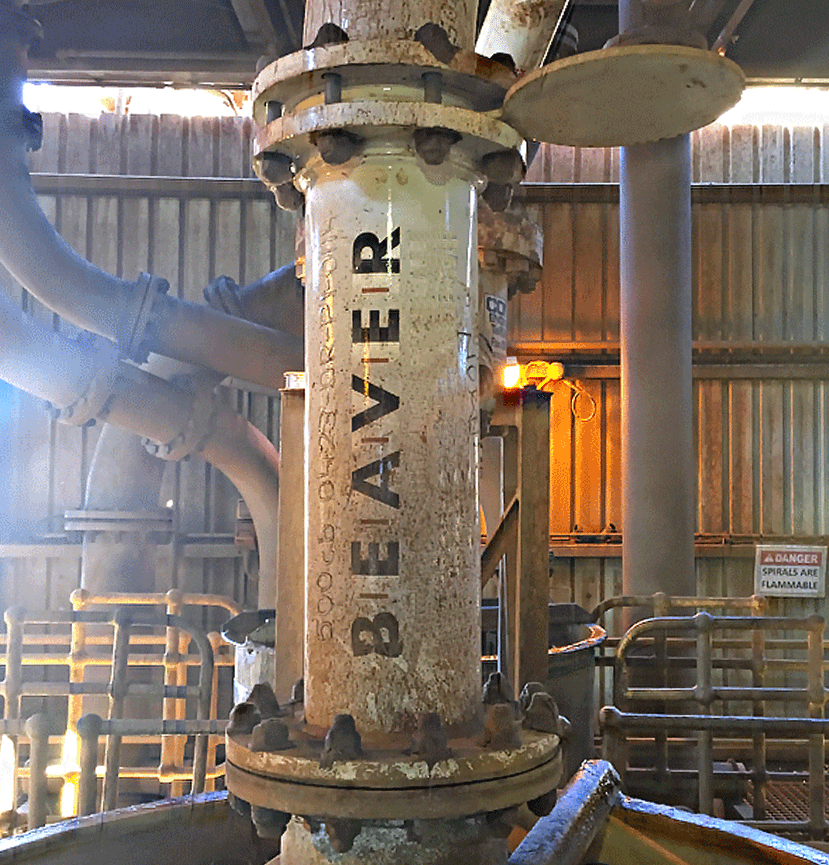
3. Bore-match the pipework
We found that there was excessive localised wear to the end connections which requires replacement of the entire spool.
This problem occurs when different pipes and hoses are combined with constant repairs or replacement, creating ‘steps’ in the pipework.
We recommended bore matching all the pipework and hoses to remove these steps. This ensures the internal diameter of the piping is consistent and reduces wear on flanges and connection points.
The engineering team agreed with our analysis and asked us to supply a total of 1.5km of Abrasiguard spools to replace the HDPE piping.
The outcome
Our Brisbane team manufactured 150 bore-matched Abrasiguard spools ranging in size from DN100-300, with 6-12mm linings.
We also built 10 Slurryflex CLX pre-formed bends, of DN200 size, for under the spiral launder. Our piping specialist was onsite to help during installation.
More than five years on, the Abrasiguard and Slurryflex piping systems are still going strong. So far, the new pipework and hoses have lasted 10 times longer than the rubber-lined steel pipe, and 20 times longer than the HDPE-lined pipe.
This has been a huge success for the plant engineering team. They have made significant maintenance savings and achieved their goal of increased throughput in the plant. Plus, they can now focus on improvements in other areas.
Extended lifespan 10x longer than rubber-lined pipe
20x longer than HDPE-lined pipe
Efficiency Increased throughput & productivity
Get the job done No more leaks & unplanned shutdowns
Stress-free fitting Specialist support during installation









